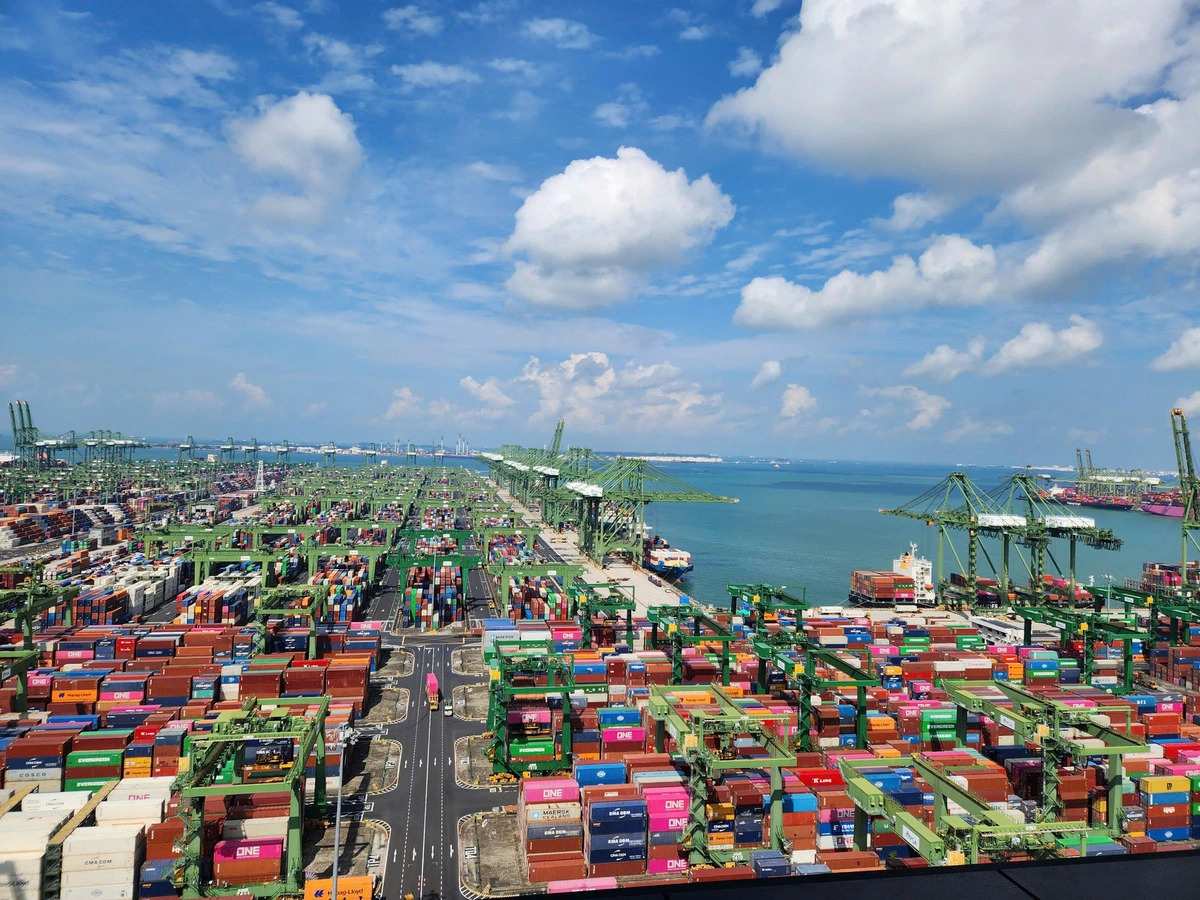U.S. President Donald Trump has suspended tariffs on goods from Canada and Mexico but continues to impose them on China, raising concerns about similar measures against other trade-surplus countries, such as Vietnam.
Several international and local experts recently shared their insights with Tuoi Tre (Youth) newspaper.
Steven Okun, CEO of APAC Advisors, a strategic advisory firm in Singapore, emphasized that tariffs are a key pillar of Trump's ‘America First’ policy.
According to Okun, Trump believes imposing tariffs on countries with large trade surpluses can reduce dependency on foreign goods and attract investment back to the U.S.
“The business community, investors, and even governments should take Trump's words seriously when he says: ‘Tariffs will make us very rich and very strong,’” Okun stated.
Meanwhile, Tran Thanh Hai, deputy director of the Import-Export Department at Vietnam’s Ministry of Industry and Trade, noted that the Trump administration’s decision to impose tariffs on imported goods was expected.
The enforcement of tariffs on China from Tuesday marked the first step in realizing this policy, while tariffs on Canada and Mexico were postponed following bilateral agreements with the U.S.
“The U.S. increasing tariffs on high-value goods is seen as the beginning of a trade conflict,” Hai explained.
Beyond the immediate impact on the three affected nations, international trade is being impacted.
Hai pointed out that the U.S.’s actions reflect a unilateral trade policy that runs counter to the current trend of trade liberalization – an approach that the U.S. once championed.
These three countries export a variety of commodities to the U.S., including electrical equipment, machinery, household goods, textiles, footwear, sports equipment, and agricultural products. As a result, supply chains related to these products will face disruptions.
Okun predicted that the tariffs already imposed, plus those potentially introduced before April 1, would have far-reaching effects on global supply chains, particularly in Southeast Asia. This could significantly alter how goods are produced and transported worldwide.
Okun warned, “Countries with whom the U.S. has a trade deficit, particularly Vietnam, should prepare for the possibility of tariffs.”
If tariffs expand, trade could decline globally, affecting economies differently based on their responses.
Additionally, as U.S. tariffs make Chinese goods more expensive, China may redirect excess production to Southeast Asia, negatively impacting manufacturers in Vietnam, Indonesia, Malaysia, and Thailand.
As Vietnam holds the third-largest trade surplus with the U.S., exceeding US$113 billion, Phan Duc Trung, chairman of the Vietnam Blockchain Association, warned that higher U.S. tariffs on Vietnamese goods could significantly impact the country's economy, exports, and growth.
The U.S. is Vietnam’s largest export market, contributing nearly 30 percent of total export revenue.
Higher tariffs would erode competitiveness in key sectors like textiles, footwear, furniture, and electronics.
This could lead to reduced export revenue and a potential decline in GDP growth, given that exports are a critical component of Vietnam’s economy.
For example, Vietnam exports approximately $35 billion worth of textiles and footwear to the U.S. annually. If tariffs rise by 10-25 percent, Vietnamese products will struggle to compete with those from Bangladesh and India.
Furthermore, foreign direct investment enterprises, including major corporations such as Samsung, Nike, and Foxconn, might relocate their production to avoid tariffs, potentially impacting domestic employment, Trung cautioned.
The labor market would also be significantly affected if tariffs were imposed. A decline in exports would force manufacturing businesses to cut staff due to rising operational costs.
For instance, Vietnam’s textile and footwear industry employs over five million workers, most of whom depend on orders from the U.S. Higher tariffs could directly impact their livelihoods.
However, some experts argue that Vietnamese industries have anticipated this risk and are preparing counter measures, such as market diversification.
Another risk, according to Trung, is the possibility of the U.S. implementing stronger protectionist measures.
Trung assumed that if tariffs are limited to Canada, Mexico, and China, Southeast Asia could benefit from supply chain shifts to maintain U.S. market access.
However, Ahmed Albayrak, a research associate at the Australia-based Lowy Institute's Indo-Pacific Development Center, cautioned that this assumption is unrealistic.
He explained that the Trump administration targets countries with high trade surpluses and imposes tariffs across industries, with a few exceptions for energy imports.
If Vietnam faces higher tariffs, its exports to the U.S. may become less competitive, reducing the country’s attractiveness for supply chain relocation, as access to the U.S. market has been a key driver of Vietnam’s manufacturing boom.
To mitigate risks, Vietnamese businesses should address U.S. concerns raised by the Office of the U.S. Trade Representative, Albayrak advised.
Strengthening intellectual property protections could improve trade relations with the U.S., and progress in this area may benefit Vietnam in negotiations with U.S. officials, he commented.
Like us on Facebook or follow us on Twitter to get the latest news about Vietnam!


















































